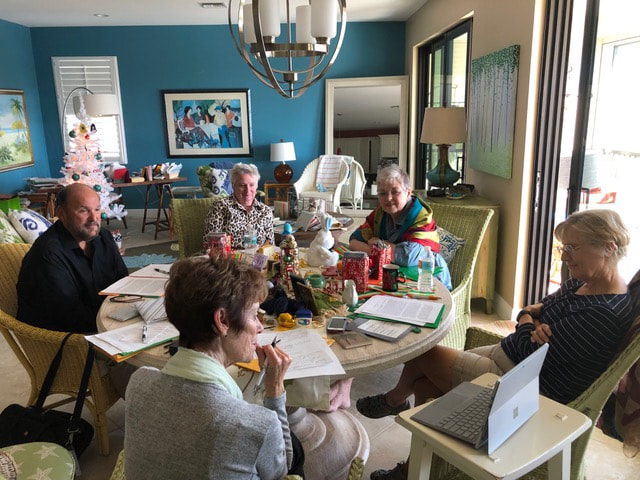 “Writing my life’s stories feels overwhelming. How, where, and when do I start?” “What life stories should I include? Will I remember enough of the right things? What’s important to tell?” “Will anybody care about my stories?” I struggled to answer these questions when I started writing about my own life. My struggle isn’t unique. Many of the people that I encourage and support in excavating and sharing their life stories encounter these types of questions themselves. It takes courage and commitment to begin and maintain the process of creating a written narrative of the past. Guided Autobiography (GAB) helped me meet the challenge. Originally developed in the 1970’s by Dr. James E. Birren at the University of Southern California, the GAB method uses specific strategies in a series of class sessions to help participants delve into their memories and determine what’s important to write down and share. Since participating in a GAB class and becoming certified as a GAB Instructor, I’ve used it to answer some of the questions that get in the way of writing personal stories. Here are a few features of GAB that I’ve found valuable in overcoming story-inertia: Groups Get Us Going GAB classes tap into the collective power generated by a group of people with a shared interest. Trained instructors create an interactive and supportive group environment, guiding students through the GAB process, where encouragement from others provides a springboard to launch into memories and dive into personal stories. Confidentiality, a core principle of GAB classes, allows students to express and reveal their vulnerability without fear of exposure outside the small group. Themes Lead to Compelling Scenes More akin to memoir than to traditional linear autobiography, the GAB method uses universal life themes to excavate and write about meaningful memories. With universal themes and prompts, participants find relevant stories anywhere on their life’s timeline, without feeling bound to a chronological order. Stories begin to unfold and unfurl, like a richly woven tapestry of pictures, patterns, and sometimes new perspectives. Tackling a Big Task Two Pages at a Time Embarking on a memoir, or simply writing single personal stories, can feel overwhelming, even intimidating. Writing stories in short segments makes the process more manageable, less daunting. GAB participants write two-page stories outside of class to read aloud to the group at the next meeting. By the end of a series of GAB sessions, participants have a collection of personal story “vignettes”. These two-page installments can blossom into longer stories, more stories, heirloom books for family and friends, full-length memoirs, or other life story projects. Caring and Sharing GAB classes cultivate and celebrate the uniqueness of our experiences, while also finding common ground, understanding, and empathy. Each GAB participant shares a part of themselves through reading their stories. Each GAB participant also actively listens and witnesses other peoples’ life stories. Compassionate caring and connection are hallmarks of the GAB experience. GAB classes demonstrate the value and importance of capturing life stories. Learn more about Guided Autobiography by visiting the Birren Center online at www.guidedautobiography.com. AuthorPeggy Rosen helps others write and share their life stories in workshops and Guided Autobiography classes. She lives, writes, hikes, bikes, and skis in New Hampshire’s White Mountains.
0 Comments
Your comment will be posted after it is approved.
Leave a Reply. |
PHNNWe are an organization of professional Personal Historians from the New England States. Categories
All
|

 RSS Feed
RSS Feed